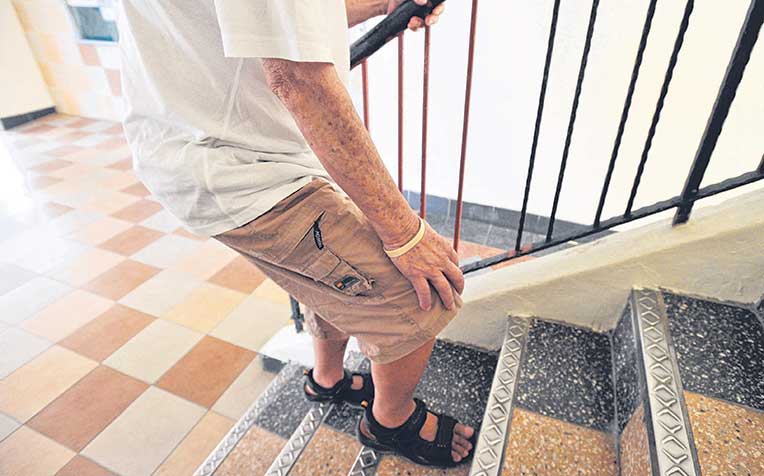
not yet approved for arthritis.
Stem cell therapy involves harvesting mesenchymal stem cells from either the bone marrow or a dipose tissues (fats), multiplying them in the laboratory and then injecting them into the affected organ or joint.
These cells are capable of regeneration and differentiating into various cell types.
Stem cells can be induced to become cartilage, bone, tendon and so forth.
It is thus this hope, that stem cells can be used to replace any injured cells and regenerate any injured organs, that makes stem cell therapy so attractive, said Associate Professor Denny Lie, senior consultant in the department of orthopaedic surgery at the Singapore General Hospital.
But in elderly patients with severe arthritis, even stem cell therapy would have limited effect, he said.
Currently, stem cell therapy is not officially approved as mainstream treatment for osteoarthritis here.
For elderly patients with severe arthritis, the condition can be debilitating and negatively impact lifestyle, said Prof Lie.
For such patients, a knee replacement is usually recommended.
The condition, which affects up to 40 per cent of patients aged 70 years and above, is a chronic degenerative disorder of the joints, a form of “wear and tear” which usually involves the knee and hip joints.
Joints afflicted with arthritis are usually swollen, painful and have limited movement.
Up to a quarter of such patients have difficulty in daily living, said Prof Lie.
There are a few treatment options for those with cartilage ulcers and osteoarthritis, said Prof Lie. He outlines the options:
HYALURONIC ACID INJECTION
Hyaluronic acid injections (like Synvisc and Monovisc) are frequently used in clinics and serve as lubricants for the knee.
They can help reduce inflammation of the knee but they do not regenerate the damaged cartilage.
ARTHROSCOPIC MICROFRACTURE AND CHONDROPLASTY
This is the most common arthroscopic (key-hole) procedure performed on patients with mild arthritis. The cartilage ulcer base is cleaned up, its edges smoothed out and small perforations (holes) are made in the base of the ulcer.
This will enable blood and stem cells from the bone marrow to be released and help in the healing of the cartilage ulcer.
The blood will form a fibrin clot and, over time, fibrocartilage, which is similar to the native original hyaline cartilage, is formed.
Though this is not the actual hyaline cartilage being regenerated, the fibrocartilage acts as a scar that reduces pain and hopefully prevents progression of the injury.
Though this involves stem cells which are released from the bone marrow, it is different from stem cell therapy, which involves harvesting stem cells and multiplying them before injecting them for therapeutic purposes.
CARTILAGE PATCH REPAIR
Cartilage ulcers can also be patched up, much like covering up a pothole on the road.
In suitable patients, the arthroscopic surgery involves cleaning up the cartilage ulcer (chondroplasty), making holes (microfracture) and then patching up the ulcer with a hyaluronic acid patch.
The patch eventually coalesces with a blood clot and forms a layer. Over a period of three to six months, the patch, which acts as a scaffold for cells, becomes re-populated by the patient’s cells and hopefully becomes similar to the native cartilage.
CARTILAGE TRANSPLANT
In order to fill up a cartilage ulcer, healthy cartilage cells can be harvested and multiplied in the laboratory. These can then be transplanted to the cartilage ulcer, either with a scaffold or with a gel matrix.
A cartilage transplant is expensive and needs about six weeks to multiply the healthy cartilage. This option is available at the Singapore General Hospital but is not popular.
Younger patients whose cartilage injury is minimal can see an orthopaedic surgeon and explore the available options, said Prof Lie.
Contributed by














 Get it on Google Play
Get it on Google Play